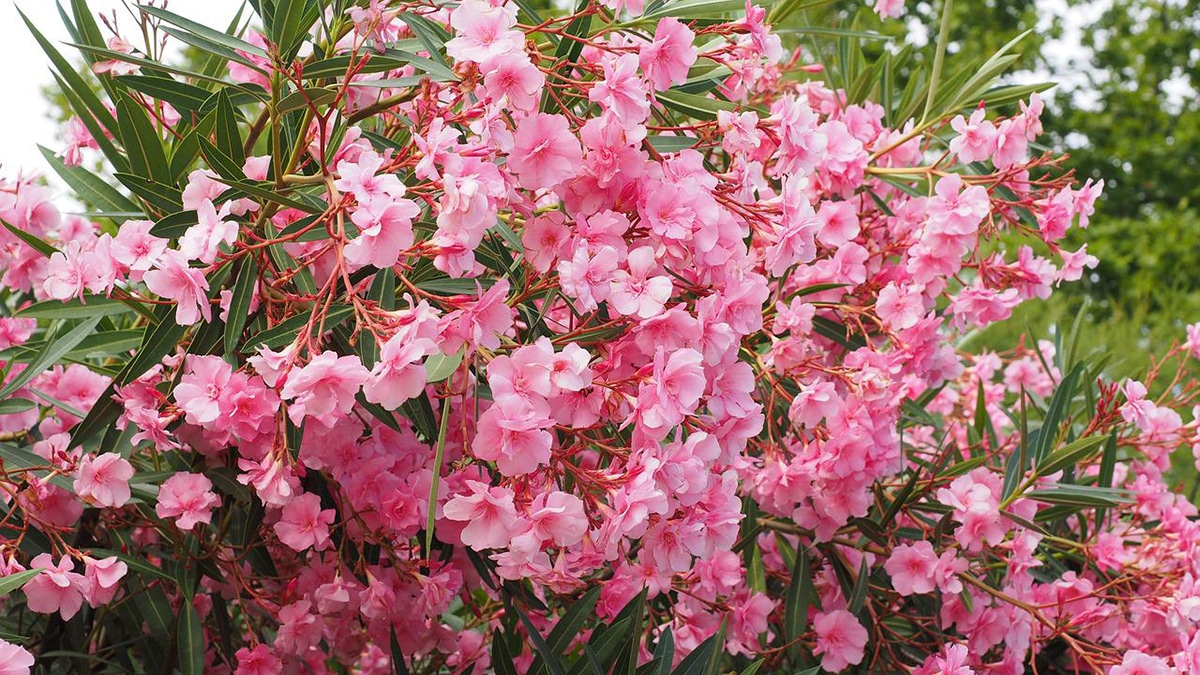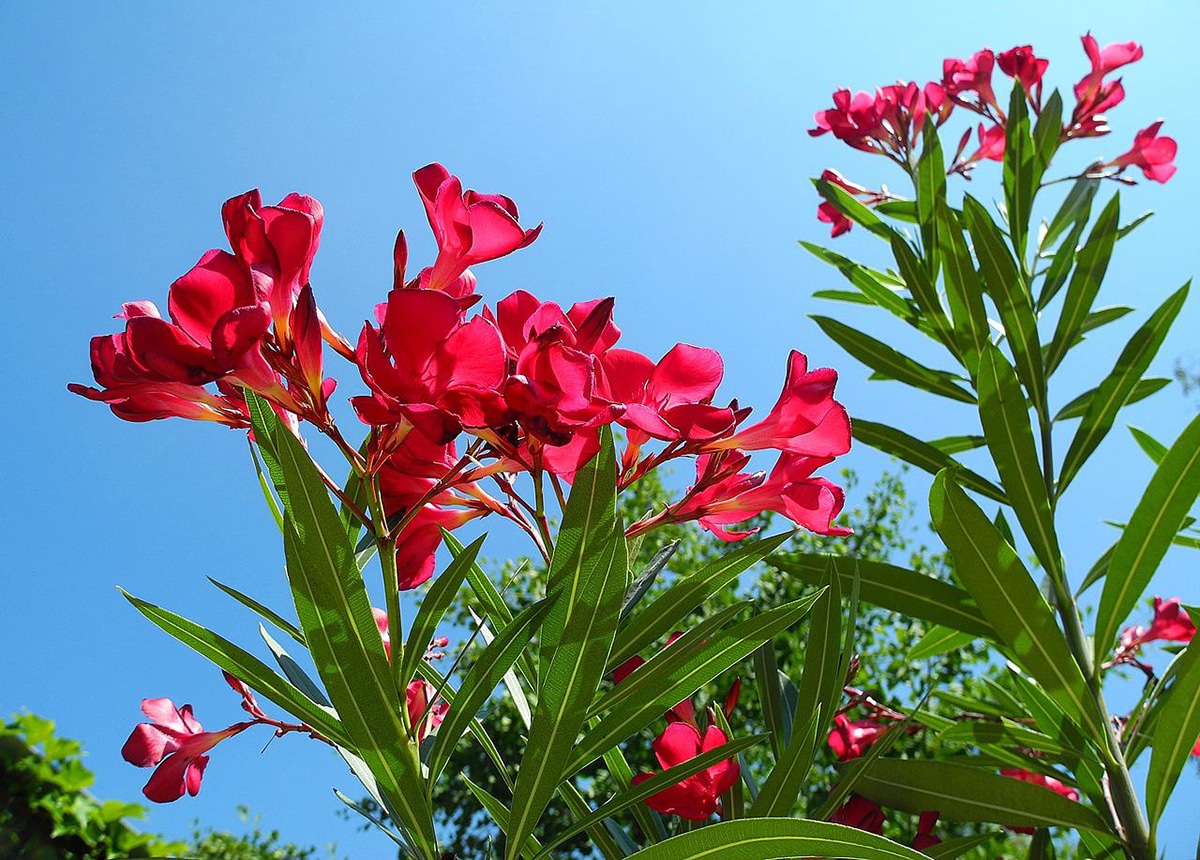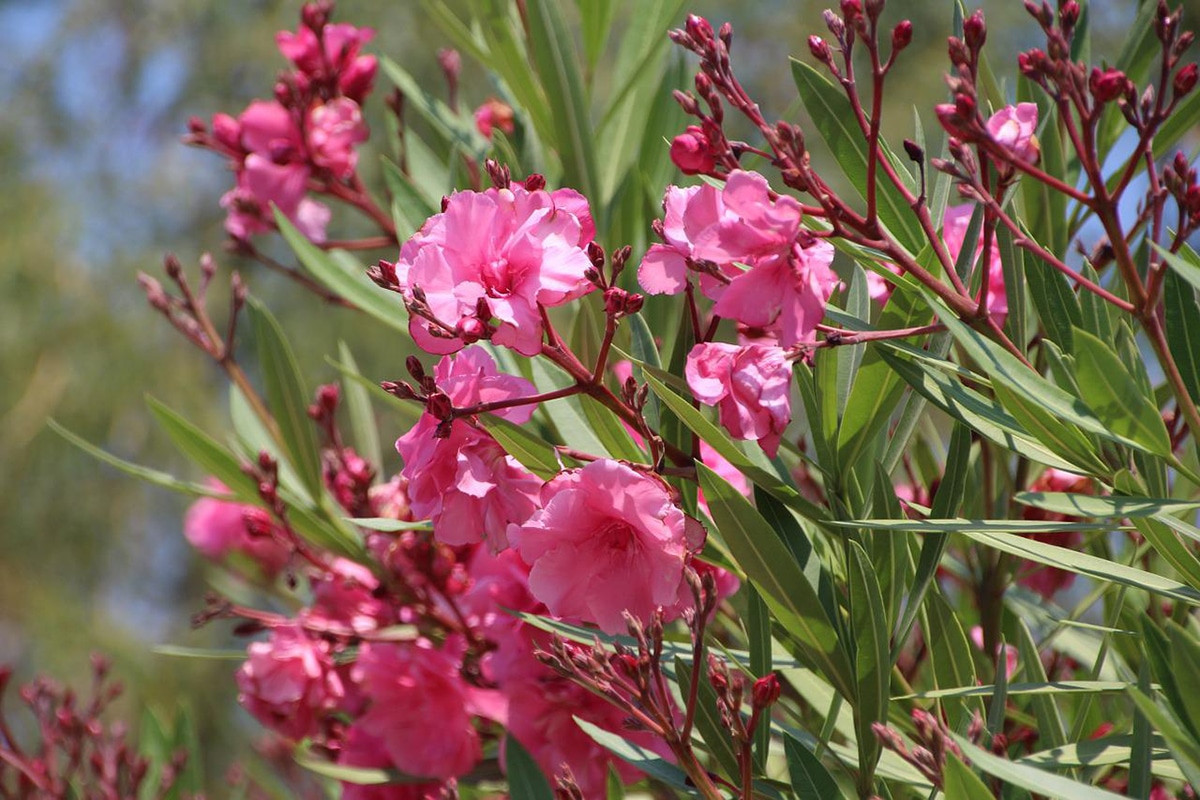
While it is true that oleander is a poisonous plant, its bushy characteristics and beautiful flowers have made it a very popular plant in gardens. As it is fast growing and reaches a considerable height, it is widely used as a hedge. It is therefore not surprising that many people want to learn how to reproduce oleanders.
In this article we will explain when and how to do this and discuss how long it takes for them to grow. It is a very simple process that, having one of these vegetables at home, we can make in a moment.
How and when to plant oleanders?

Before explaining how to reproduce oleanders, we must first know when to do it. The best time of year to plant these beautiful flowers is between October and April, that is: From autumn to spring. However, it is best to wait until April, as it usually gives better results.
Some people even advise planting the youngest oleanders in August or September, when the flowering season is over. And this why? It turns out that when we plant oleanders in the spring, we do so in their flowering stage. As a consequence, it is shortened in its first year of life. It should be noted that the best locate this plant in a spot with plenty of direct sunlight so that it can grow and develop properly.
To learn how to reproduce oleanders, it is important to keep in mind that we can do it in two ways: By seeds or by cuttings. Both are quite simple, but propagation by cuttings is the most used method for this vegetable. We will discuss both processes step by step.
How to reproduce oleander from seeds
Let's start by explaining how to reproduce oleanders with seeds. It is important to mention that if the seeds come from a hybrid plant, the chances are very high that the color of the flowers and the new seedlings will be identical to the mother plant. However, there is a slim chance that these new seedlings will develop certain characteristics from one of the hybridized vegetables. Thus there is a possibility that the color of the flowers will be different from what we expect.
In general, the seeds of the oleanders are collected in winter, specifically when the pods that keep them have already matured. As for sowing, the best time of year to carry it out is in spring. However, we can sow the seeds immediately after collecting them. Let's see how to plant oleanders step by step:
- Prepare the substrate: First of all, it is time to prepare a mixture of substrate based on sand and peat.
- Sow: The seeds are covered with the substrate that we have mixed in step one. It is important to keep them at a temperature between 20 and 25 degrees. After approximately 15 days they will have germinated.
- Transplant: When the first seedlings have already begun to develop, it is time to transplant them to their final place. We will see that they are ready for it when they already have about four or five leaves. The hole that we dig in the ground must be twice as wide as the seedling and when introducing it we must be very careful not to damage the roots. Then you have to fill the hole with more soil and press it slightly to make it compact.
- Regar: It is important to keep the soil moist, but without flooding so that the roots do not rot.
In the event that we want to plant several oleanders, it is essential that we leave Between two and four meters of separation between each one. Otherwise they could take away water and nutrients from each other, negatively affecting all plants.
How to make a cutting of an oleander?
As we mentioned earlier, reproduction by cuttings is the most used form in oleanders, and in other plants. It is a very simple method that we can carry out if we already have one of these vegetables in good condition. Generally, the cuttings are prepared in the fall and replanted in the spring. Let's see how to do it step by step:
- Prepare the substrate: The first thing we must do is create a mixture of equal parts of peat and sand. To it we will add a little perlite.
- Prepare the cutting: When we have the substrate ready, we have to cut a branch, or several, with a length of approximately 15 centimeters. From it we will remove all the leaves that are at the base. At the top you have to leave four leaves at most.
- Bury the cuttings: Once we have the cuttings, we must bury them in a pot filled with the substrate as we have done in step one. Oleanders can take a long time to take root, so you will have to wait a few months before making the definitive transplant. During this period, the ideal temperature for cuttings is between 15 and 20 degrees. In addition, we must keep the substrate moist, but without flooding.
- Transplant: As soon as the cuttings have rooted well, it is time to transplant them to the final location. There we will dig a hole twice as wide as the seedling and we will introduce it. It is very important not to bury it too deep, the stem should never remain underground. During this process we must be very careful and try to avoid damaging the roots. Then it's time to fill the hole with more soil.
- Regar: Finally, it remains to water the oleanders. The soil must be compact and moist, but we must always prevent it from becoming waterlogged.
How long does it take to grow oleander?

Oleander growth is quite fast. In a few years it is easily able to exceed two meters in height. Although it is true that species that have exceeded five meters have been sighted, it is unusual, since the maintenance and pruning that this plant requires does not allow it.

Remember that the oleander is a poisonous bush, so it is not recommended to grow it if we have small children or pets at home. But if it is not your case or you have it under control, go ahead! You no longer have an excuse not to reproduce your oleander.